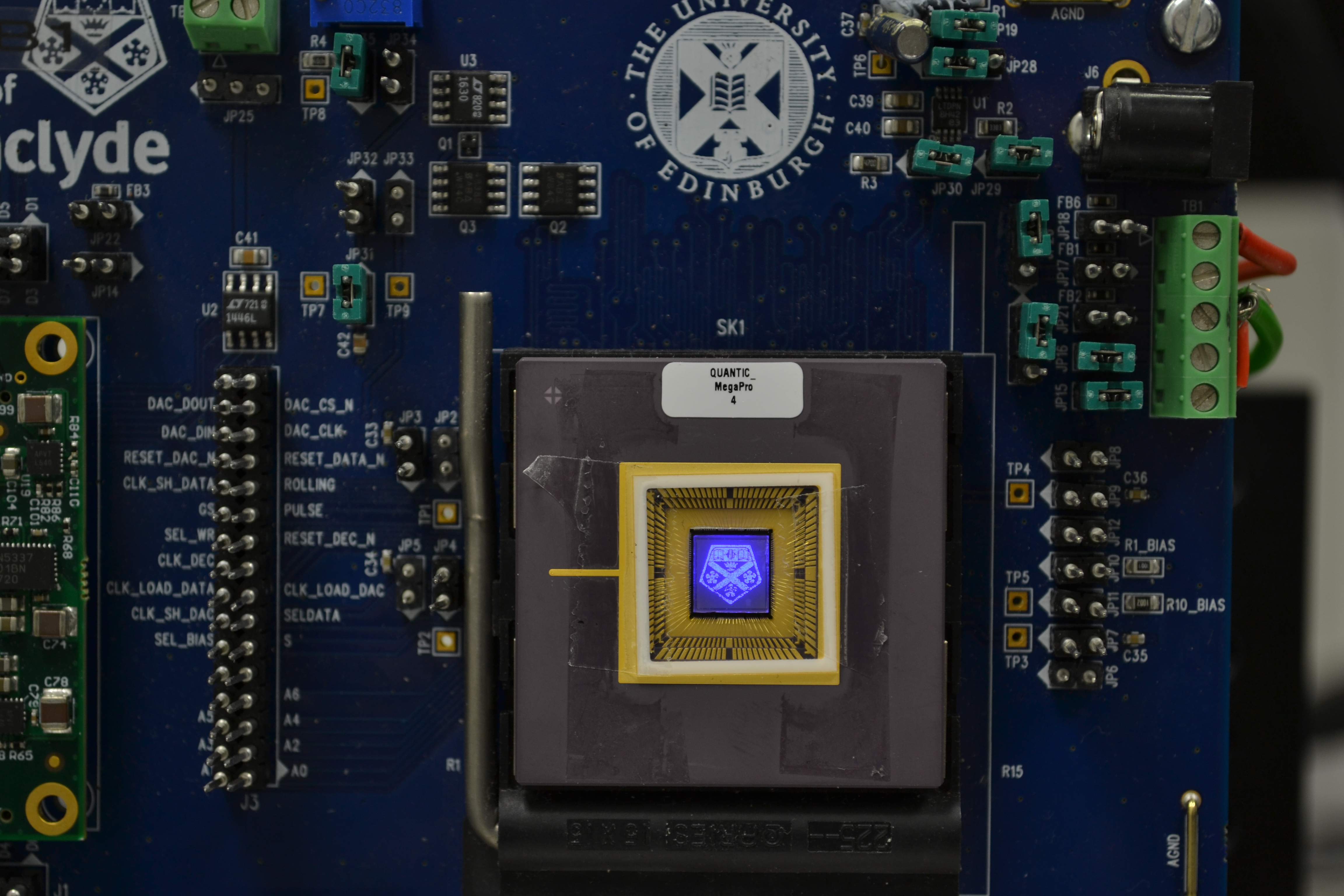MegaProjector
World-leading microLED array
MegaProjector is a world-leading micro-LED (mLED) display, capable of displaying up to 1 million frames per second. By rapidly flashing an array of mLEDs, it is possible to transmit a vast amount of information through conventional lighting.
LEDs have all but replaced traditional lighting systems due to their numerous advantages in longevity, small size, and power-saving capabilities however recent developments have enabled them to be produced at even smaller scales, known as micro-LEDs. Researchers at the University of Strathclyde have created a mLED display that can be electronically controlled to reach ultra-fast framerates.
Coupled with high sensitivity detectors, also pioneered through quantum research, Megaprojector can be deployed for several digital applications such as wireless communications through lighting (LiFi), and 3D mapping of a built environment.
MegaProjector researchers are also exploring its use for specialised systems such as ultraviolet communications, and structured biological imaging in microscopy.
MegaProjector
Dr Jonathan McKendry and Dr Graeme Johnstone from the University of Strathclyde discuss MegaProjector and its potential application in VR displays, optical wirless communications and non-line of sight UV communications.
Key Benefits
- Encodes data in both spatial and intensity, allowing ultra-high data transfer rates compared to other approaches.
- Useable at micrometre to kilometre ranges, enabling a broad range of applications.
- Utilises widespread LED-based technology so can be retrofitted to existing lighting infrastructure or high-resolution displays.
Applications
- Satellite and Free-Space datalinks
- Optical wireless communications (LiFi)
- Non-line-of-sight UV communications
- 3D and structured light image capture
- Single-pixel cameras

Defence & Security
Meet our investigator
Martin Dawson is Professor and Director of Research in the University of Strathclyde’s Institute of Photonics and is also Head of the Fraunhofer Centre for Applied Photonics. He has over 30 years’ research experience in applied photonics gained in academia and industry and is recognised for his work on optically-pumped and ultrafast lasers, III-nitride optoelectronics and diamond photonics.


